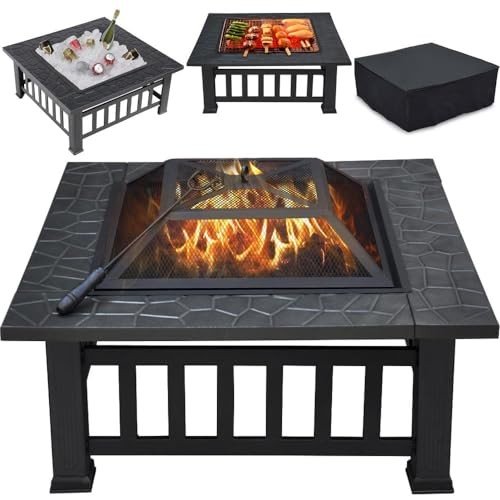The Fireplace: A Warm Embrace of Tradition and Comfort
Fireplaces have been an important part of human habitation for centuries, acting as a source of warmth, an event location, and a sign of convenience. While the modern variations may differ extremely from their ancient forefathers, the attraction of a fireplace endures. This article checks out the numerous elements of fireplaces, including their history, function, types, and maintenance, while likewise dealing with frequently asked questions.
The Evolution of Fireplaces
Fireplaces go back to ancient times when open flames were used for cooking, heating, and defense from wildlife. Over the centuries, fireplaces developed from simple fire pits to the advanced renditions we see today. Here is a brief timeline of their advancement:
- Prehistoric Era: Cavemen used open flames for warmth and cooking. Wind and smoke frequently blew into dwellings.
- Middle Ages: Stone and brick fireplaces became typical in homes and castles, integrating chimneys to carry smoke outside.
- Renaissance: Elaborately created mantels emerged, and fireplaces ended up being centers of social interaction.
- Industrial Revolution: Innovations in heating materials resulted in a variety of styles and functionalities.
- Modern Era: The advent of gas, electric, and bioethanol fireplaces offered cleaner options to traditional wood-burning units.
Table 1: The Evolution of Fireplaces
| Age | Attributes |
|---|---|
| Ancient Era | Open flames for heat and cooking |
| Middle Ages | Stone and brick structures with early chimneys |
| Renaissance | Ornate mantels, social centers |
| Industrial Revolution | Varied styles, advent of new products |
| Modern Era | Gas, electric, and bioethanol choices |
The Purpose of a Fireplace
Fireplaces serve dual functions: they supply physical warmth and produce an emotional environment. Fireplace Styles gather around the fireplace to bond, share stories, and take pleasure in a cozy setting. The radiance of a fire can be soothing, adding to a sense of relaxation and intimacy. Beyond individual pleasure, fireplaces likewise offer practical benefits, consisting of:
- Home Heating: Effective heat source, particularly in cooler climates.
- Increased Home Value: A properly designed fireplace can enhance the visual worth of a home.
- Emergency Heating: In case of power interruptions, wood-burning fireplaces can work as an essential heat source.
- Aesthetic Appeal: A centerpiece that adds to interior decor.
Types of Fireplaces
Today, fireplaces come in different styles and fuel types, accommodating a varied variety of preferences and settings. Here are some typical types:
Wood-Burning Fireplaces:
- Traditional fire pits
- Classic masonry fireplaces
- Need significant upkeep and chimney maintenance
Gas Fireplaces:
- Available in both direct vent and ventless varieties
- Simpler to utilize and maintain than wood-burning fireplaces
- Supply immediate heat with a flick of a switch
Electric Fireplaces:
- Offer associated heat sources without genuine flames
- Often created to imitate traditional fireplaces
- Suitable for smaller areas and homes without a chimney
Bioethanol Fireplaces:
- Use bioethanol fuel, providing a sustainable alternative
- Require no ventilation and can be placed anywhere
- Safe and simple to preserve
Table 2: Types of Fireplaces
| Type | Fuel Source | Features | Upkeep Requirements |
|---|---|---|---|
| Wood-Burning | Wood | High atmosphere, heat source | Regular chimney cleaning |
| Gas | Natural gas or gas | Instant heat | Minimal, occasional servicing |
| Electric | Electrical energy | Easy setup | Very low maintenance |
| Bioethanol | Bioethanol fuel | Ventless, portable | Low, mainly cleaning up |
Upkeep and Safety Considerations
Owning a fireplace involves certain obligations, particularly regarding its safe operation and long-term upkeep. Here are essential maintenance tips and safety guidelines:
Maintenance Tips:
- Annual Inspection: Always have your chimney and fireplace inspected at least once a year by a qualified service technician.
- Routine Cleaning: Clean out ashes and particles after each use, and ensure the flue is open before starting a fire.
- Examine for Cracks: Inspect masonry for cracks or damage to prevent structural concerns.
- Use Proper Fuel: Only usage dry, skilled wood for wood-burning fireplaces; do not burn treated wood.
Safety Guidelines:
- Install Smoke Detectors: Ensure smoke detectors are functional, checking them monthly and replacing batteries as needed.
- Keep a Fire Extinguisher: Have one close-by, even if a fireplace is utilized occasionally.
- Monitor Flames: Never leave a fire unattended, and guarantee children and animals are kept an eye on around the fireplace.
Frequently Asked Questions (FAQs)
1. How can Best Fireplace UK minimize smoke from a wood-burning fireplace?
To minimize smoke, use dry, skilled wood, and guarantee that your chimney is clean and unblocked.
2. Is it safe to utilize gas fireplaces during a gas leakage?
Never ever use a gas fireplace throughout a gas leak. Right away leave the location and contact gas services for assistance.
3. Can I set up an electric fireplace myself?
Electric fireplaces are generally easy to set up, however it is recommended to speak with specialists to make sure security and compliance with local building codes.
4. What is the very best kind of fireplace for small spaces?
Electric fireplaces or bioethanol models are frequently best for small areas, as they do not need extensive ventilation or structural adjustments.
Fireplaces have transcended their initial purpose of providing heat to become valued aspects of home style and household life. They evoke memories of heat, events, and togetherness while supplying functional advantages that enhance modern living. By comprehending the numerous kinds of fireplaces, their upkeep, and security practices, homeowners can delight in the ageless appeal of this cherished function for generations to come.

